Using silicone utensils is one of the most important aspects of kitchens that have been spread all over the world as being safe for human health and made of silicone cookware and silicone bakeware, which is highly versatile and durable. However, there are still questions about their safety and suitability for different cooking tasks. In this deep dive, we will explore all the information that you need to know about silicone instruments, baking silicone tools, and certain silicone products, whether they are safe for your kitchen or not.
What are Silicone Utensils?
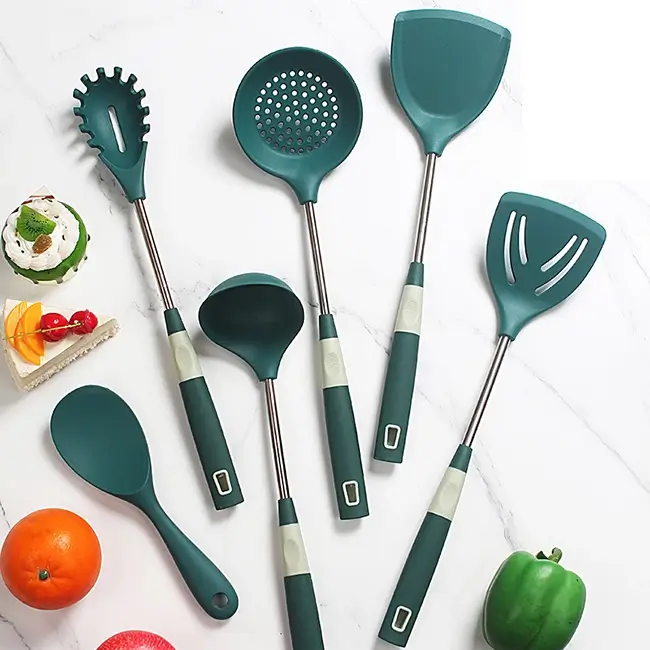
Silicone utensils are kitchen tools made from silicone. Silicone is a synthetic polymer, an elastomer, manufactured by adding carbon and/or oxygen to the element silicon. Most silicone products can withstand up to 260°C. Rubber silicone (polysiloxane) is the form of silicone that is commonly used in kitchenware. These silicone utensils come in a variety of shapes and sizes, including spatulas, spoons, brushes, whisks, and tongs. The FDA has approved the use of food-grade silicone in a multitude of kitchen goods, including silicone molds, cupcake liners, ice blocks, food stuff storage bags, and reusable straws.
Silicone Bakeware
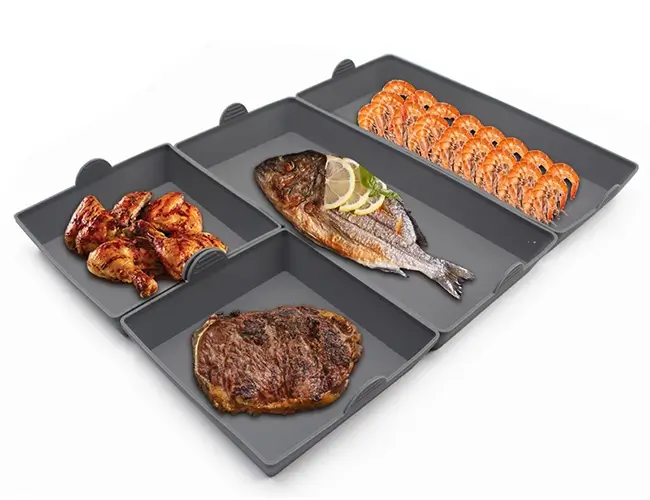
Bakeware made from silicone is more sturdy, convenient, easy to use, and long-lasting. Cake pans, baking silicone molds, and baking mats can go from the freezer to the oven, microwave, or dishwasher without affecting the quality of the product or the food.
The use of silicone as a new silicone bakeware offers a variety of benefits, such as non-stick silicone baking trays, cake pans, and molds that are non-stick, easy to clean, distribute heat evenly, durable, and long. and silicone bakeware is a heck of a lot easier to transport than cast iron and ceramic bakeware.
Benefits of Silicone Cookware
Silicone utensils have become increasingly popular in modern kitchen products, and for good reason. They offer a range of benefits that make them a must-have for both professional chefs and home cooks. These are the benefits that make silicone cookware a must-have in your kitchen.
Silicone rubber can withstand high temperatureswithout melting or warping and is considered oven safe, making it durable for use with hot pots, pans, and baking dishes. Silicone cookware is heat-resistant, freezer safe, and oven safe, but only up to 428 degrees Fahrenheit (220 Celsius).
Silicone has naturally nonstick coatings, making it easy to cook without food sticking to the utensils because they have nonstick properties.
Silicone products are soft and flexible to use as a cookware, reducing the risk of scratches on cookware surfaces.
Silicone utensils are versatile, they are available in various shapes and sizes for different cooking tasks and they are oven safe and microwave safe.
Silicone utensils are hygienic and easy to clean, it is resistant to bacteria and odors, easy to wash by hand or in the dishwasher safe.
Silicone utensils are durable and long-lasting; Flexible yet sturdy, they offer long-lasting performance.
Are Silicone Utensils Safe?

Maybe this question crossed your mind, “Are silicone cookware safe?” and so the answer to is silicone utensils are safe to use. However, you have to make it sure that your silicone cookware and silicone utensils are recognized and approved by the U.S Food and Drug Administration (FDA) and labelled as Generally Regarded as Safe (GRAS). See to it that the silicone kitchen utensils you buy can attest to the fact that they are 100% food grade silicone cookware safe.
Characteristics of a Food Grade Silicone Cookware
What is a Food-Grade Silicone?
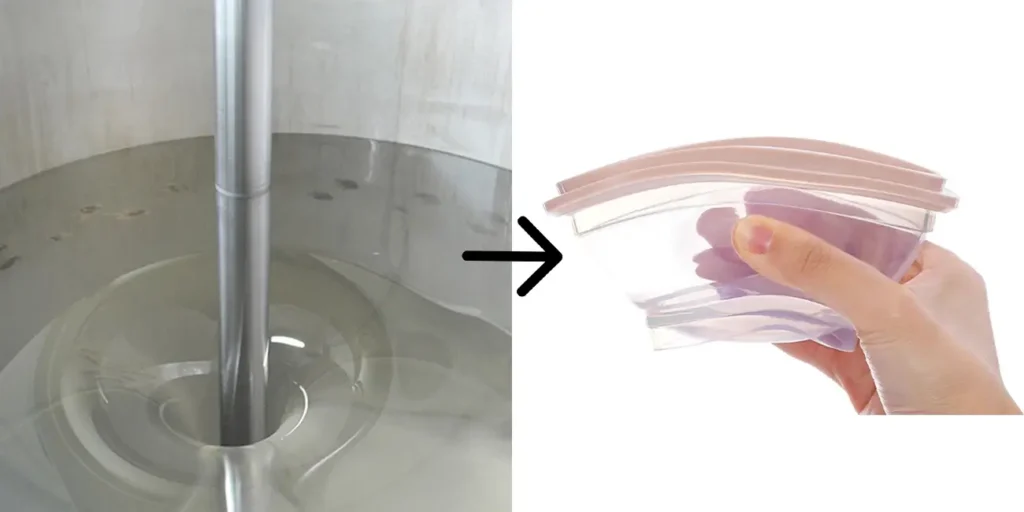
Food-grade silicone is a type of silicone that has been tested and certified by FDA to be safe for contact with food. Food-grade is a type of silicone that has been trialled and certified by the FDA for safety use in food packing. Made from a synthetic polymer called polydimethylsiloxane (PDMS), having PDMS for its polymeric base, food-safe silicone is a great choice for kitchenware and containers to hold food as it is highly durable, resistant to high temperature, non-stick in nature and safe to clean with dishwashers and microwaves too.
Let’s know the characteristics of a silicone cookware that is made from food grade materials.
FDA Recognized
The Food and Drug Administration (FDA) classified silicone and other materials as food grade compounds (food-grade silicone)In 1979, the U.S. The Food and Drug Administration (FDA) recognized silicon dioxides as a Back in 1979 the U.S. Food and Drug Administration (FDA) determined that silicon dioxides—the basic elements in silicone cookware—were generally recognized as safe to use even in food-grade contexts”. safe (GRAS) to use as food-grade materials. One of the first silicone cookware (spatula) was sold in the 1980s.
Safety and Non-Toxicity
One of the most important characteristics of food grade silicone cookware is its safety for use with food. Food grade silicone safe is non-toxic, BPA-free, and does not leach harmful chemicals into food, making it a healthy choice for cooking and baking.
BPA-Free
Silicone utensils are generally considered safe for kitchen use, especially when they are made from food-grade silicone and are free from harmful chemicals like BPA (Bisphenol); which is the main ingredient in producing plastics.
It’s important for consumers to look for BPA-free labels when purchasing silicone utensils to ensure their safety for use in cooking and food preparation
Heat Resistant
Silicone utensils can withstand high temperatures, typically up to 400-500 degrees Fahrenheit (200-260 degrees Celsius). Silicone resins used as heat-resistant and nonstick coatings and silicone elastomers used to make cookware. This makes them suitable for use in cooking, baking, and grilling.
Eco-Friendly
Silicone is a sustainable and eco-friendly material, as it can be recycled and reused. Choosing food grade silicone cookware reduces waste and minimizes environmental impact compared to disposable or non-recyclable alternatives.
Non-Reactive
A 100% pure silicone is food-grade silicones, that is it won’t leach any toxic chemicals at the time you cook. Unfilled silicone also doesn’t have BPA. Although cheap silicone spoons and spatulas contain plastic stuffing that could accumulate BPA.
Durable and Long-Lasting
Silicone cookware is durable and resistant to wear and tear. They are less likely to break, chip, or warp compared to traditional utensils made from materials like plastic, ceramic or wood.
Tips for Using Silicone Bakeware and Cookware Safely
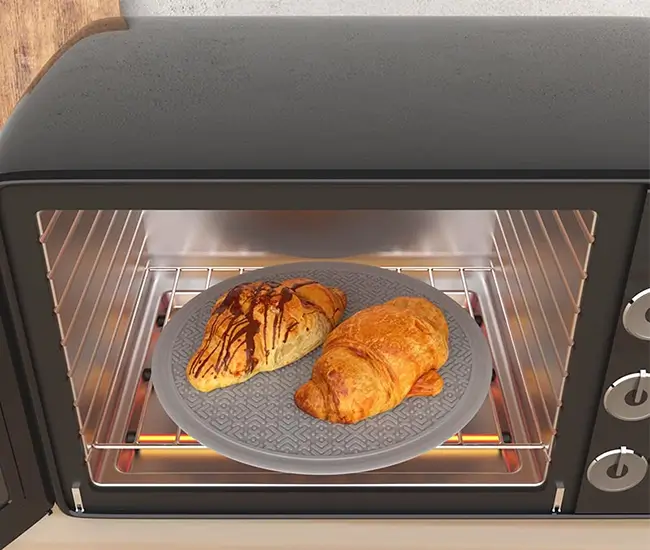
To ensure the safety of silicone bakeware and products in your kitchen, follow these tips:
Check Quality: Recommend that you use silicone bakeware, namely from reputable manufacturers among them silicone spatula, that employ food grade silicone and abide by safety standards.
Avoid High Heat: With silicone’s heat resistance feature in mind, ensure that silicone kitchenware does not come in contact with direct flames or excessive heat for extended periods.
Clean Thoroughly: Wash silicone utensils thoroughly after each use to prevent staining, odors, and bacterial growth.
Replace When Necessary: Have an eye for your silicone utensils and of you notice any kind of wear or tear, immediately change it.
Use for Intended Tasks: Perform tasks for which they are prescribed by using silicone spoons and avoid using them as substitutes for serrated knives.
Care and Maintenance Tips
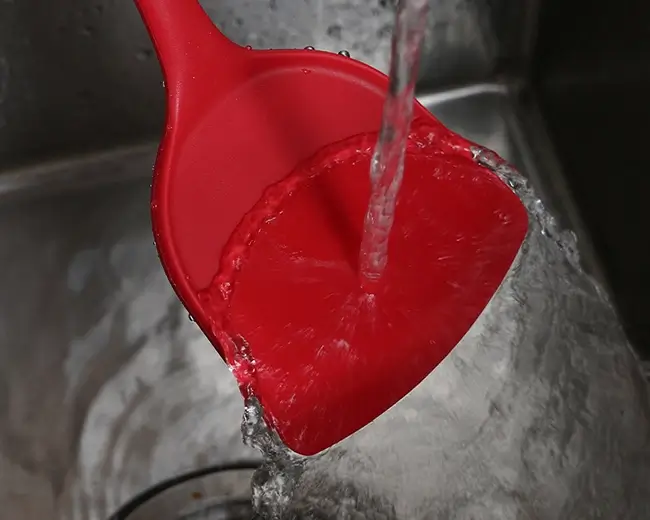
To ensure the longevity and performance of your silicone cookware, follow these care tips:
Hand Wash or Dishwasher: Most silicone cookware is dishwasher-safe, but hand washing with warm, soapy water is recommended to prolong their lifespan.
Avoid Sharp Objects: Do not use sharp knives or utensils on silicone surfaces, as they can damage the material.
Avoid High Heat: Although silicone is heat-resistant, do not expose it to a flame directly and do not place it near a hot surface for a while.
Inspect for Damage: Go through your cookware which is made up of silicone on a routine basis to look out for any indication of damage or wear of that is, like cracks, tears or discoloration. Replace damaged utensils promptly.
Common Questions
Is silicone safer than plastic?
The use of silicone instead of plastics as products for kitchen equipment and storage of foods makes the former more preferred. Silicone being stronger to heat and cold, means that it is more durable than plastic, also they are made with synthetic rubber and synthetic plastic polymers, therefore they are also not safe for food use in contrast to natural rubber like organic soil.
Although the consideration is set that you are using food-graded silicone items to make full use of the safety benefits.
Can You Microwave Silicone?
Silicone molds come in microwave-safe, freezer-safe, and oven-safe too. In 1979, the FDA approved silicone as such for cookware and other household products. Temperature changes will not cause food-grade silicone to leak into foods in any way contrary to the general consumer concerns.
Can Silicone Utensils and Cookware Be Used with Metal Utensils?
While silicone is tough enough to withstand several uses without damage, it is better to avoid using metal cutlery on silicone surfaces as this may cause scratches and damage to the silicone. Choose silicone, plastic or those made of wood as the alternative will keep the functionality in your silicone products. Cast iron would be a great alternative as well as a cookware.
Conclusion
Finally, silicone utensils are the versatile and reliable kitchenware tools, which possess heat resistance, non-stick properties, durability and versatility. On the other hand, it may be a good idea to use FOOD-GRADE SILICONE PRODUCTS and make sure they are used properly, choose high quality products and follow proper care and maintenance procedures in order to guarantee their long life and safety. With the knowledge of the advantages and the consequences of using silicone utensils, you can decide wisely and have an epic cooking experience.